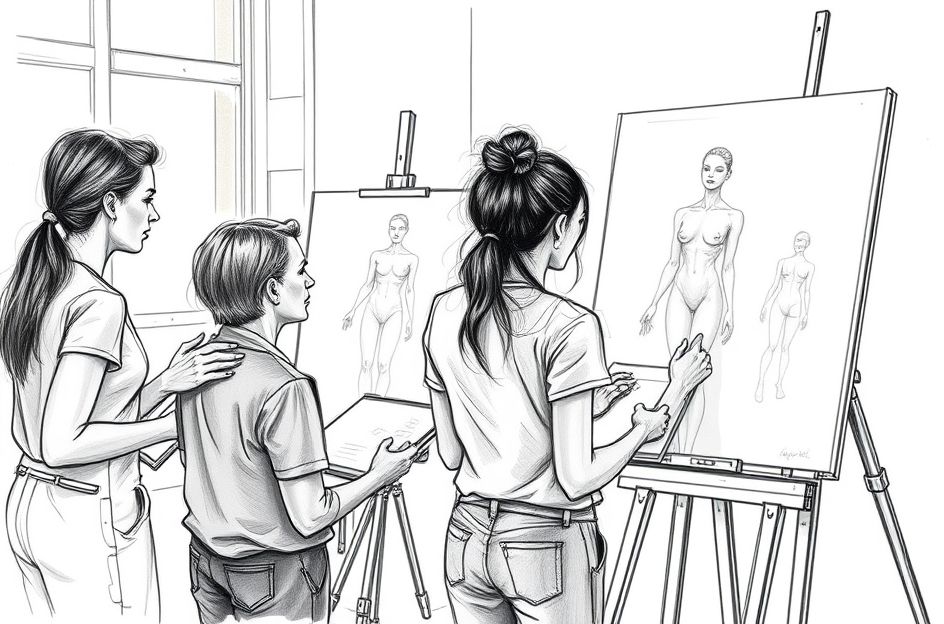Figure drawing presents a unique challenge for artists. Accurately capturing the human form on paper can feel daunting, especially when attempting to master everything at once. The key is to approach it incrementally, focusing on consistent practice. This guide introduces fundamental concepts to help you embark on your figure drawing journey.
First, gather your drawing supplies. While drawing doesn’t require expensive equipment, certain tools enhance the process. Experiment with various pencils and paper types to discover your preferences, as material choice is subjective and depends on your style and subject matter.
Start with a newsprint pad for inexpensive practice sketches. However, be aware that newsprint yellows over time. For permanent pieces, invest in quality paper like Strathmore. Medium-textured paper offers a good balance, providing enough tooth for layering while remaining smooth enough for detailed work. A large, smooth drawing board is also essential for a stable drawing surface.
Before putting pencil to paper, develop a basic understanding of human anatomy. Studying anatomy reveals the body’s construction and proportions, along with how muscles and tendons influence movement. While memorizing every anatomical detail isn’t necessary, a foundational knowledge is beneficial.
Accurate proportions are crucial in figure drawing. Artists use the head as a unit of measurement, from the top of the head to the bottom of the chin. The standard height of an erect figure is typically 7 ½ to 8 heads. This can vary depending on the subject, requiring adjustments. Remember that the 7 ½ head measurement applies to standing figures; adapt your measurements for different poses.
To take a head measurement, stand at a reasonable distance from your subject. Hold your pencil at arm’s length, gripping it from the bottom. Keeping your head still and closing one eye, align the pencil tip with the top of the subject’s head. Slide your thumb down the pencil to mark the bottom of the chin. This “head” measurement will serve as your reference for the rest of the figure.
When selecting a pose, prioritize naturalness. Your model should be comfortable and relaxed, as they’ll hold the pose for an extended period. Allow them time to adjust and settle in. A relaxed pose translates to a more believable drawing or painting. Avoid awkward or uncomfortable poses, as they will reflect in your artwork.
Consider different lighting scenarios. Will you draw indoors or outdoors? If indoors, will you use natural or artificial light? From which direction will the light originate? Will there be multiple light sources? Beginners can simplify the process by using a single light source that partially illuminates the figure, creating more shadow. As your skills improve, you can explore more complex lighting effects.
When starting your drawing, don’t get bogged down in minute details. Many beginners fall into this trap, resulting in disproportionate or inaccurate drawings. Instead, study your subject, squint your eyes, and identify the basic shapes that comprise it. Focus on these foundational elements first.
Figure drawing is a broad field, and this guide only scratches the surface. Supplement your learning with classes, workshops, and live model practice. Study figure drawing and anatomy books, join discussion groups, and ask questions. Above all, persevere and never stop practicing.
